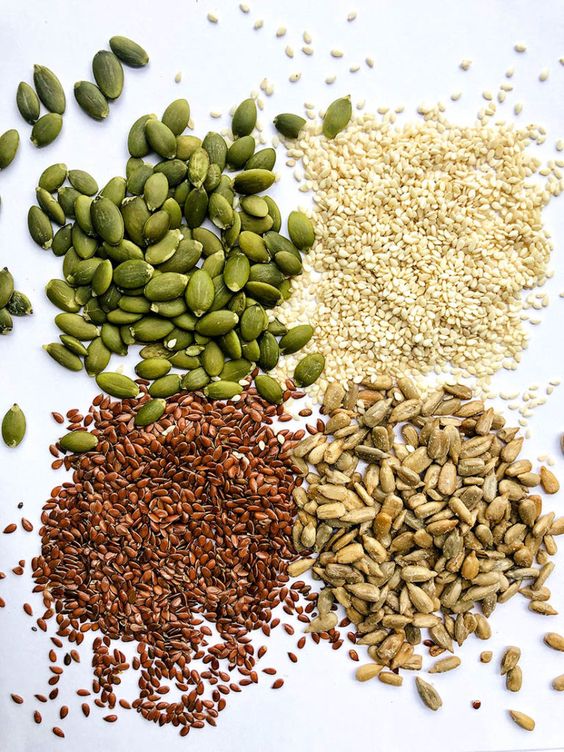Embracing Nature’s Rhythm: Seed Cycling for Hormonal Harmony

In the search for natural remedies and holistic health practices, seed cycling has emerged as a gentle yet powerful way to support hormonal balance through the foods we consume. This method, rooted in the wisdom of nature and the cycles of the body, involves incorporating specific seeds into one’s diet during different phases of the menstrual cycle. This blog post delves into the art and science of seed cycling, exploring how this practice can promote hormonal harmony and contribute to overall well-being.
Understanding Hormonal Imbalance
Hormonal imbalance can manifest in various ways, from irregular menstrual cycles to mood swings, skin issues, and fertility challenges. In a world where stress, environmental toxins, and processed foods are commonplace, it’s no surprise that many are seeking ways to restore balance and vitality naturally. Enter seed cycling, a practice that aligns with the body’s natural rhythms, offering a nourishing approach to mitigating hormonal disruptions.
The Basics of Seed Cycling
Seed cycling is a practice that divides the menstrual cycle into two phases: the follicular phase (day 1-14, starting with menstruation) and the luteal phase (day 15-28). Each phase is supported by consuming a specific combination of seeds that are believed to naturally support the body’s production, detoxification, and balance of estrogen and progesterone.
- Follicular Phase: The first half of the cycle focuses on flaxseeds and pumpkin seeds. Flaxseeds are rich in lignans, which help modulate estrogen levels, while pumpkin seeds are high in zinc, supporting progesterone production as the body gears up for ovulation.
- Luteal Phase: During the second half, the emphasis shifts to sesame seeds and sunflower seeds. Sesame seeds, also rich in lignans, support the body in the detoxification of estrogen, and sunflower seeds provide a good source of selenium, aiding in hormone regulation and supporting liver function for hormone detoxification.
Incorporating Seed Cycling into Your Diet
Integrating seed cycling into your diet can be as simple as adding 1-2 tablespoons of the appropriate ground seeds to your meals each day. These can be sprinkled over salads, blended into smoothies, or mixed into yogurt, ensuring a seamless addition to your daily nutrition. The key is consistency and patience, as the benefits of seed cycling often become noticeable after several months of practice.
The Science Behind Seed Cycling
While empirical evidence supporting seed cycling is growing, the practice is grounded in the understanding of phytoestrogens and nutrients within the seeds that are known to influence hormonal health. Phytoestrogens, for example, can mimic estrogen in the body, helping to balance levels naturally. Additionally, the essential fatty acids, vitamins, and minerals in these seeds play crucial roles in hormonal regulation and overall health.
A Holistic Approach to Wellness
Seed cycling is more than just a dietary change; it’s a commitment to living in harmony with the body’s natural cycles and the rhythms of nature. By embracing this practice, individuals can foster a deeper connection with their bodies, learning to listen to and nourish themselves in a mindful and holistic manner.
In conclusion, seed cycling presents a beautiful, nourishing way to support hormonal balance and overall well-being. As we continue to explore the connection between diet and health, practices like seed cycling remind us of the power of nature’s bounty and the body’s innate wisdom. Whether you’re navigating hormonal challenges or simply seeking to enhance your health naturally, seed cycling offers a harmonious path to vitality and balance.


